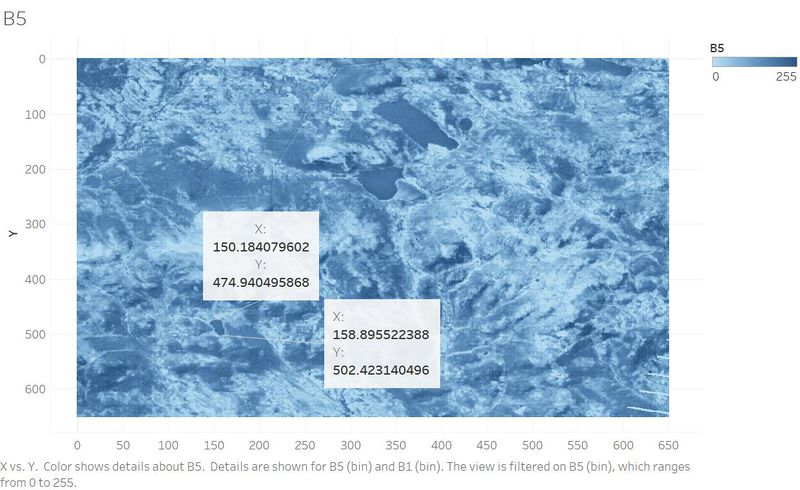Shuozhang insights
|
|
|
|
|
Boonsong Lake
As X=0, Y=0 refers to the pixel in the upper-left corner of the image, the Y-coordinate should be reversed.
The B1 penetrates water and B5 absolutely absorbed by the water, the area that shows a large number of B1 and B5 is more likely to be the water body. The chart of B1 and B5 shows that the Boonsong Lake is roughly in the upper middle of the image. The length of the lake approximately covers from upper-left of the lake: X=150.1, Y=474.9 to bottom-right of the lake: X=158.9, Y=502.4. Then the length of the pixel is around 28.9 which means 28.9 is corresponding to 3000 feet in the real situation which means 1 pixel-length is 103.8 feet.
Therefore, one pixel covers 103.8*103.8=10774 square feet, nearly 10.8 thousand square feet.
Features in the Image
| Band | Color | Wavelength (nm) | Useful for Mapping |
|---|---|---|---|
| B1 | Blue | 450-520 | Penetrates water, shows thin clouds and general visible brightness. |
| B2 | Green | 520-600 | Shows different types of plants and general visible brightness. |
| B3 | Red | 630-690 | Vegetation color and certain mineral deposits. |
| B4 | Near Infrared (NIR) | 770-900 | Partially absorbed by water, sensitive to vegetation structure and chlorophyll. |
| B5 | Short-wave Infrared (SWIR) 1 | 1550-1750 | Completely absorbed by liquid water. Sensitive to moisture content of soil and vegetation; penetrates thin clouds. |
| B6 | Short-wave Infrared (SWIR) 2 | 2090-2350 | Insensitive to vegetation color or vigor, shows differences in soil mineral content. |
Changes in the Features
Compare the Images of June:
Compare the Images of September:











